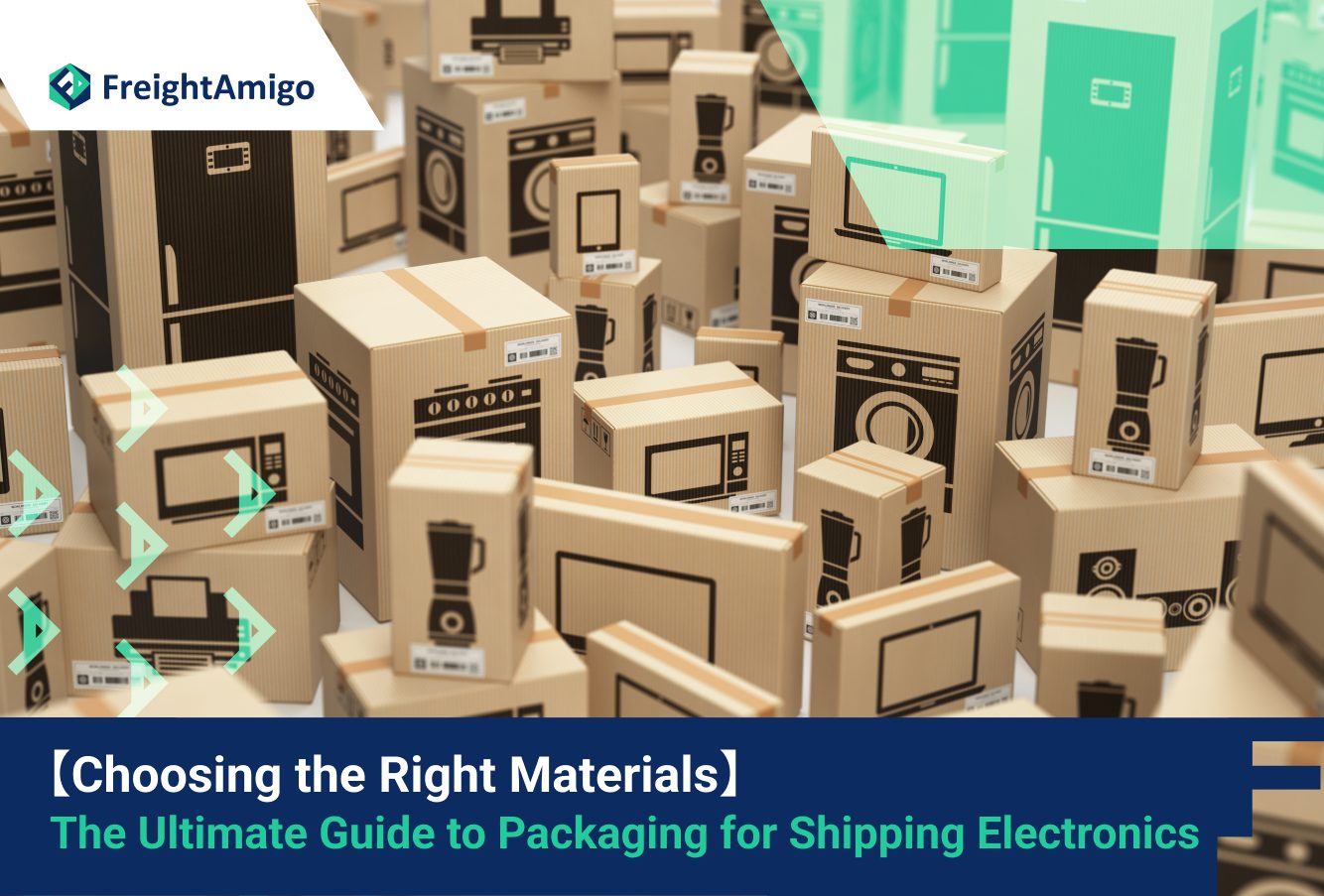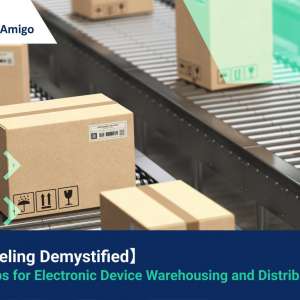Shipping electronics can be a nerve-wracking experience. Whether you’re sending a brand-new smartphone to a customer or shipping a computer to a friend, ensuring that your electronics arrive safely and in perfect working condition is crucial. One of the most important aspects of shipping electronics is choosing the right packaging materials. In this ultimate guide, we will explore the various factors to consider when choosing packaging materials, common materials used for shipping electronics, and provide valuable tips for packing your electronics safely and securely.
Author Name: Aiden Ng– Marketing Analyst at FreightAmigo
Want to compare the best Express, Air Freight, Sea Freight, Rail Freight & Trucking rates so as to have better control on cost?
Importance of Choosing the Right Materials for Packaging
Choosing the right materials for packaging is essential to protect your electronics during transit. Electronics are delicate and sensitive to shock, vibrations, and extreme temperatures. Proper packaging materials can prevent damage caused by mishandling, impact, or exposure to adverse conditions. By investing in high-quality packaging materials, you can ensure that your valuable electronics reach their destination unscathed.
Factors to Consider When Choosing Packaging Materials
When selecting packaging materials for shipping electronics, several factors must be taken into consideration. First and foremost, the size and weight of the electronic device should be considered. It is crucial to choose packaging materials that can adequately support and protect the weight and dimensions of the device.
Another factor to consider is the fragility of the electronics. If the device contains delicate components, such as glass screens or sensitive internal parts, extra care must be taken to select materials that provide cushioning and shock absorption. Additionally, the intended mode of transportation and the duration of the journey should be considered. Different materials may be required for air shipping compared to ground transportation.
Common Packaging Materials for Shipping Electronics
There are several common packaging materials that are widely used for shipping electronics. One of the most popular choices is corrugated cardboard boxes. These boxes are lightweight, cost-effective, and offer excellent protection against impacts. They can be easily customized to fit the dimensions of the electronic device and provide cushioning through the use of foam inserts or bubble wrap.
Foam inserts and bubble wrap are also commonly used as protective materials for shipping electronics. Foam inserts can be custom-made to snugly fit the shape of the device, providing maximum protection against shocks and vibrations. Bubble wrap, on the other hand, offers excellent cushioning and is ideal for protecting delicate screens or other fragile components.
Anti-static packaging materials are essential for shipping electronics, especially sensitive electronic components. Anti-static bags or foam provide protection against static electricity, which can damage sensitive circuitry. These materials are particularly crucial when shipping computer components or other devices with delicate electronic parts.
Tips for Packing Electronics Safely and Securely
Packing electronics safely and securely is vital to ensure their protection during shipping. Here are some valuable tips to help you pack your electronics like a pro:
- Disassemble if possible: If your electronic device can be disassembled, it is advisable to do so before packing. This reduces the risk of damage caused by movement or impact during transit.
- Use proper cushioning: Use foam inserts, bubble wrap, or other cushioning materials to protect your electronics from shocks and vibrations. Make sure all sides of the device are adequately cushioned.
- Secure cables and accessories: Remove any cables or accessories and pack them separately. Secure them to prevent tangling or damage to the device.
- Label fragile items: Clearly label any fragile components to ensure careful handling during transit. This will alert handlers to exercise caution when loading, unloading, and transporting your package.
- Seal the package securely: Use high-quality packaging tape to seal the package securely. Reinforce the edges and corners for added protection.
Packaging Solutions for Fragile Electronic Components
Certain fragile electronic components require specialized packaging solutions to ensure their safe transportation. Here are some examples of packaging solutions for fragile electronic components:
- ESD shielding bags: Electrostatic discharge (ESD) shielding bags are designed to protect sensitive electronic components from static electricity. These bags are essential for shipping circuit boards, memory modules, or other delicate electronic parts.
- Air-filled cushioning bags: Air-filled cushioning bags are an excellent option for protecting delicate electronic components. These bags are filled with air and can be inserted into packaging boxes to create a protective barrier around the components.
- Molded foam inserts: Molded foam inserts are custom-made to fit the shape of the electronic component precisely. These inserts provide maximum protection against shocks and vibrations and are ideal for shipping high-value or fragile electronic parts.
Conclusion: How Choosing the Right Packaging Materials Can Protect Your Electronics During Shipping
In conclusion, choosing the right packaging materials is crucial for protecting your electronics during shipping. By considering factors such as size, weight, fragility, and transportation mode, you can select materials that provide adequate cushioning and protection. Common packaging materials like corrugated cardboard boxes, foam inserts, and bubble wrap are widely used for shipping electronics. Additionally, specialized packaging solutions like ESD shielding bags, air-filled cushioning bags, and molded foam inserts are available for fragile electronic components.
By following the tips provided in this guide and investing in high-quality packaging materials, you can ensure that your electronics arrive at their destination safely and in perfect working condition. Don’t take any chances with your valuable electronics—choose the right packaging materials and ship with confidence.
There are different options for cargo transportation. If you want to choose the most convenient and suitable solution, it is best to have the full support of logistics experts! If you are planning to ship goods overseas, please go to the FreightAmigo page for inquiries.
===
Read More:
How to ship electronics: A Comprehensive Guide
Best Practices and Tips for a Secure Delivery
How to Safely Ship Your Precious Gaming PC
===
If you have any inquiries on logistics/supply chain, feel free to contact FreightAmigo now:
Chat with us online OR Phone : +852 28121686 OR WhatsApp: +852 27467829









































